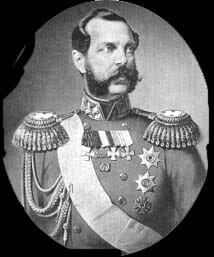 The character Indiana Jones wasn’t based solely on the imagination of George Lucas. Lucas himself suggested that the late Percy Fawcett, archaeologist, adventurer, and explorer was largely credited for inspiring the Jones Saga. But the end of Percy Fawcett’s career ended in a way that suggests not only that would in itself have made an excellent film, but has left many people scratching their heads in wonder for years afterward.
The character Indiana Jones wasn’t based solely on the imagination of George Lucas. Lucas himself suggested that the late Percy Fawcett, archaeologist, adventurer, and explorer was largely credited for inspiring the Jones Saga. But the end of Percy Fawcett’s career ended in a way that suggests not only that would in itself have made an excellent film, but has left many people scratching their heads in wonder for years afterward.
Fawcett was first sent to South America in 1906 where he mapped a significant area of jungle in Brazil. He then traveled to Bolivia when he received the assignment from the Royal Geographic Society. Up until his expedition the region had been largely suspect due to interests held by local governments and others. While searching the Amazon he wrote in his diary that his party had encountered and shot an anaconda no smaller than 62 feet in length; itself today considered a cryptid. He furthermore wrote that he had seen other creatures which would make even today’s cryptozoologists gasp in awe including a cat-dog hybrid of sorts that leaped around and remained elusive except on two occasions when he came face to face with them personally. He was also the first to discover the double-nosed Andean tiger hounds, but thought them to be dogs with two noses. His lifelong career as an explorer was considered by many to be a huge success. But then things took a turn for the worst when he made contact with an elusive group calling themselves “The Glove.”
In 1925, he was commissioned to go with his son Jack into the Brazilian rain forest once again. And this time he was to go into a dangerous region to uncover a lost city known only to him as “Z.” The significance of this city was a secret that seemingly died with Fawcett himself. As he boarded the train at the beginning of what would be a long journey, he repeated the instructions he had left behind in writing: “If our expedition is lost. Do not send anyone after us.” And there Fawcett’s story presumably ends. On May 29th, 1925 he telegraphed his wife stating that he was about to enter unexplored territory with Jack and his friend Raleigh Rimell, a man they both had a long history of loyalty and friendship with. They were to cross into then unexplored territory across the Xingu tributary.
Those that were left behind eventually themselves started expeditions in the hopes of finding Fawcett, and over 100 people have died on expeditions searching for the lost explorers or their remains. There are rumors that Fawcett himself was driven mad in the jungles and founded his own tribe of cannibals. Other theories point to the nameplates and the compass discovered and thought to belong to their expedition. The only evidence ever discovered that seemed to indicate Fawcett had died was a set of bones thought to be his for several years until DNA testing proved otherwise. To this day no one knows what really happened to one of the greatest explorers the world has ever known.

